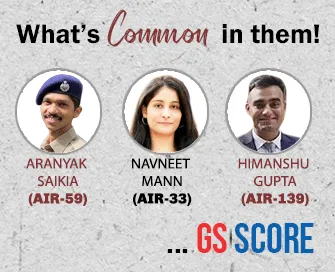

4th September 2023 (9 Topics)
Editorials
Context:
Recent heinous crimes by migrant workers in Kerala have sparked discussions about a new law. It must address social, cultural, and economic insecurities while tackling crime.
Addressing Issues of Migrant Workers
- Outdated Regulations: The existing Inter-state Migrant Workmen Act of 1979 is outdated and doesn't cover most labor suppliers, leaving many workers unprotected and unregistered.
- Invisibility of Workers: The law doesn't account for contemporary labor arrangements, making it hard to determine the exact number of migrant workers and their rights.
- Crime against Migrants: The law aims to address the increasing crimes against migrant workers in the State.
Need for Comprehensive Revisions
- Inaccurate Data: Conflicting reports about the number of migrant workers in Kerala highlight the need for better data collection and management.
- Portability of Rights: The proposed law must address the issue of statelessness when migrants move between states for work.
- Decentralization: To ensure inclusivity, there should be a decentralization of governance, collaboration with local bodies, and transparency in resource allocation for migrant welfare.
Combating major Issues
- Mob Violence and Stereotyping: Instances of mob violence against migrants are troubling. Stereotyping the entire migrant community based on isolated issues needs to stop.
- Local Government Responsibility: Local self-government bodies should play a role in curbing hatred, fostering relations, and addressing health concerns of migrant workers.
- Policy Reform: A new policy should bridge the gap in the outdated Inter-state Migrant Workmen Act, focusing on social security, mutual cooperation, and coordination among government departments for the well-being of migrant workers in Kerala.


Editorials
Context:
According to the State of Food Security and Nutrition in the World report of 2022, India is home to 224.3 million undernourished people. Although there is need for India-specific hunger index, at the level of States and Union Territories that will help to evaluate the extent of undernourishment at a more localised scale.
Persistent Food Insecurity in India
- Global Hunger Index Ranking: India ranks 107 out of 121 countries in the Global Hunger Index 2022, highlighting continued food insecurity, child malnutrition, and hunger.
- Disparities across States: There are stark differences among states. A subnational hunger index is essential for targeted action.
- Components of the State Hunger Index (SHI): The SHI considers indicators such as child stunting, wasting, under-five mortality, and BMI undernourishment for working-age adults to assess hunger levels at the state level.
Alarming State Hunger Index Scores
- Alarming Scores: States like Bihar, Jharkhand, and Chhattisgarh scored 35, categorized as 'alarming' hunger levels, comparable to African nations. Several other states performed above the national average.
- Moderate Hunger: States like Chandigarh, Sikkim, Puducherry, Kerala, and others scored below 16, falling into the 'moderate hunger' category. No state is classified as 'low hunger.'
- Impact of COVID-19 Not Included: The effects of the COVID-19 pandemic on SHI are not considered due to the lack of post-pandemic data.
Challenges in Combating Hunger and Malnutrition
- Deteriorating GHI Score: India's GHI score has worsened in recent years, primarily due to increasing calorie undernourishment. Data disputes exist with no recent National Sample Survey on nutritional intake.
- Child Malnutrition: India faces challenges in child nutrition, with high rates of stunting, wasting, and underweight children. Despite poverty reduction, food insecurity persists.
- Need for Targeted Action: While the GHI has limitations, it sheds light on undernourishment and child malnutrition. India must address these issues to improve food security and child well-being.


Editorials
Context:
The Agriculture Working Group (AWG) of G20 highlighted priority areas to encourage diversification in agriculture by promoting sustainable agriculture, and channeling financial resources towards environmentally conscious and climate-resilient farming.
India's Achievements and Upcoming G20 Presidency
- Chandrayaan-3 Success: India's successful moon landing with Chandrayaan-3 and a strong Q1 FY24 GDP growth rate of 7.8% boost India's image globally.
- Leadership Opportunity: As India prepares for its G20 presidency, it can showcase its scientific capabilities and robust economic management, positioning itself as a key player in addressing global challenges.
- Philosophy of 'Vasudhaiva Kutumbakam': Prime Minister Narendra Modi aims to leverage science and the economy for the benefit of humanity under the philosophy of 'One Earth, One Family, One Future.'
Addressing Food Security and Climate Change Challenges
- Deccan High-Level Principles: The G20 Agriculture Working Group's principles focus on humanitarian assistance, nutritious food access, climate-resilient agriculture, innovation, and responsible investments.
- Funding Challenges: Implementing these principles effectively requires substantial funding, posing a significant challenge.
- Precision Technologies for Agriculture: India's success in precision technologies in space can be applied to agriculture, benefiting farmers facing extreme weather events, with a focus on sharing these technologies with Global South nations.
Prioritizing Sustainable Agriculture and Global Collaboration
- Sustainable Agriculture Practices: G20 countries should encourage sustainable agriculture, climate-smart farming, and precision technologies to combat climate change's impact on agriculture.
- Biofortification and Research: Promoting biofortification and research can enhance nutritional security. India's expertise in biofortification, like zinc-rich rice and wheat, can benefit the Global South.
- Environmental Sustainability: Agri-policies must shift towards environmentally sustainable and nutritious food systems, as current policies harm natural resources. G20 collaboration is essential for addressing global food security and environmental challenges.


Editorials
Context:
Aditya-L1 gave the Indian space research a big push in terms of global recognition in Space exploration.
India & Space Exploration
- Significant Milestone: ISRO's successful soft landing of a lunar rover and the launch of Aditya-L1, India's first solar mission, showcase its growing capabilities in space exploration.
- Aditya-L1's Objectives: Aditya-L1 will study the sun in multiple wavelengths, focusing on understanding solar wind and solving mysteries like the coronal heating problem.
- Challenges in Space: The sun holds many secrets, and Aditya-L1's findings could have implications for space weather and spacecraft technology. ISRO aims to reach the L1 Lagrange point for an unobstructed view of the sun.
Technical Challenges and Data Transmission
- Complex Mission: Aditya-L1 faces technical challenges in reaching the L1 point and rapidly transmitting data to Earth for analysis.
- ISRO's Navigational Expertise: ISRO has demonstrated navigational proficiency in interplanetary missions, collaborating with foreign space agencies. These skills will be crucial for Aditya-L1's success.
- Pushing Boundaries: Aditya-L1 represents another boundary to push for ISRO and the national solar physics community, highlighting India's commitment to space exploration.
The Quest for Scientific Discovery
- Ongoing Scientific Exploration: The sun, despite being extensively studied, continues to hold secrets, emphasizing the importance of Aditya-L1's mission.
- Implications for Space Technology: Aditya-L1's findings could impact space weather and spacecraft technology, making it a valuable addition to ISRO's achievements.
- Future Exploration: As ISRO continues to make strides in space exploration, it raises questions about the future direction and potential collaborations in the global space community.




